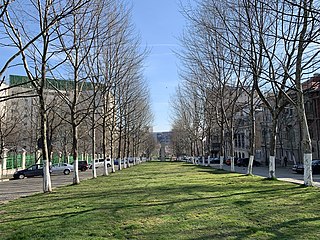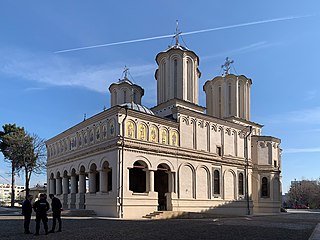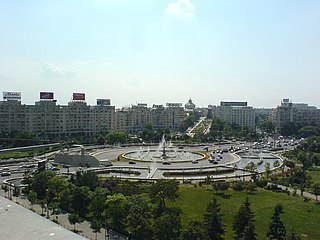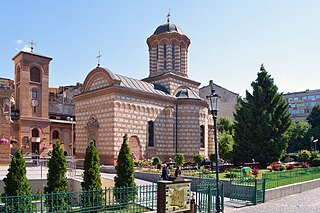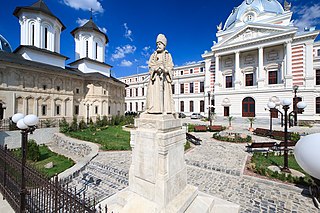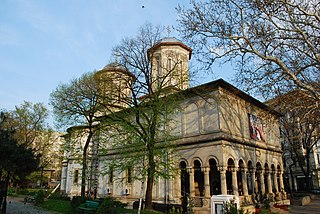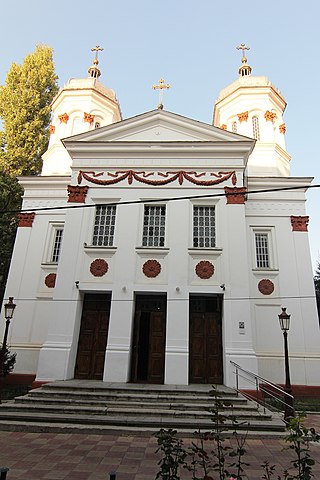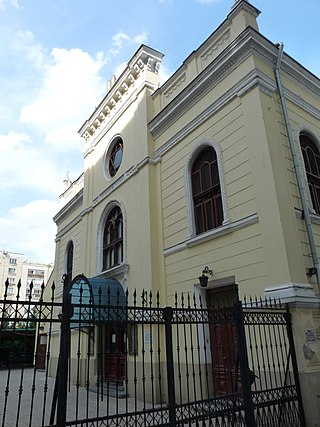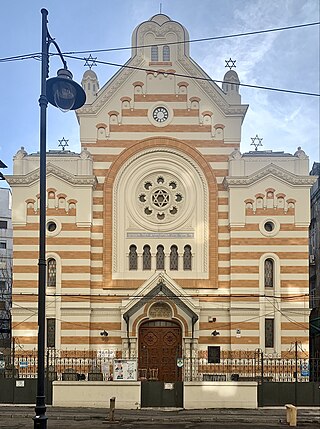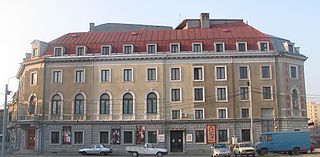Self-guided Sightseeing Tour #10 in Bucharest, Romania
Legend
Guided Free Walking Tours
Book free guided walking tours in Bucharest.
Guided Sightseeing Tours
Book guided sightseeing tours and activities in Bucharest.
Tour Facts
4.8 km
70 m
Experience Bucharest in Romania in a whole new way with our free self-guided sightseeing tour. This site not only offers you practical information and insider tips, but also a rich variety of activities and sights you shouldn't miss. Whether you love art and culture, want to explore historical sites or simply want to experience the vibrant atmosphere of a lively city - you'll find everything you need for your personal adventure here.
Activities in BucharestIndividual Sights in BucharestSight 1: Dealul Mitropoliei
Dealul Mitropoliei, also called Dealul Patriarhiei, is a small hill in Bucharest, Romania and an important historic, cultural, architectural, religious and touristic point in the national capital. From a religious point of view, it is one of the centres of Romanian Orthodoxy: the headquarters of the Romanian Patriarchate and the residence of the Patriarch are both located here.
Sight 2: Catedrala Patriarhală Sfinții Împărați Constantin și Elena
The Romanian Orthodox Patriarchal Cathedral is a functioning religious and civic landmark, on Dealul Mitropoliei, in Bucharest, Romania. It is located near the Palace of the Chamber of Deputies of the Patriarchate of the Romanian Orthodox Church. Since it is a working cathedral, it is the site of many religious holidays and observances that take place for those who follow the Orthodox Christian faith in Bucharest, including a Palm Sunday pilgrimage. The Orthodox Divine Liturgy at the cathedral is known for its a cappella choir, a common practice shared by all the Orthodox churches, in both their prayer services and liturgical rites. The Romanian Orthodox Patriarchal Cathedral is a designated Historical monument—Monument istoric of Romania.
Sight 3: Piața Unirii
Piața Unirii is the largest square in central Bucharest, Romania, and one of the largest public spaces in Europe, being located in the center of the capital where Sectors 1, 2, 3, and 4 meet. Part of the Civic Centre, it is bisected by Unirii Boulevard, originally built during the Communist era as the Boulevard of the Victory of Socialism, and renamed after the Romanian Revolution of 1989.
Sight 4: Biserica „Sfântul Anton - Curtea Veche”
The Curtea Veche Church is a Romanian Orthodox church located at 33 Franceză Street in the Lipscani quarter of Bucharest, Romania. It is dedicated to the Feast of the Annunciation and to Saint Anthony the Great.
Sight 5: The Old Court Princely Palace
Curtea Veche was built as a palace or residence during the rule of Vlad III Dracula in 1459. Archaeological excavations started in 1953, and now the site is operated by the Muzeul Municipiului București in the historic centre of Bucharest, Romania.
Sight 6: Mihail Cantacuzino
The statue of Mihai Cantacuzino is the first statue erected in Bucharest (1865-1869), being made of Carrara marble by the sculptor Karl Storck.
Sight 7: Biserica Sfântul Gheorghe - Nou
New St. George Church is a Romanian Orthodox church located in Bucharest, Romania, along the city center's main north–south thoroughfare, where it intersects the Lipscani area. It is dedicated to Saint George. The church is associated with Constantin Brâncoveanu: it was built during his reign and he is buried inside.
Sight 8: Biserica Ortodoxă Sfântul Gheorghe Vechi
The Old St. George Church is a Romanian Orthodox church located at 36 Calea Moșilor in Bucharest, Romania. It is dedicated to Saint George.
Sight 9: Templul Coral
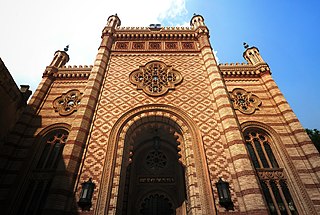
The Choral Temple is a Orthodox Jewish congregation and synagogue, located at 9-11 Sf. Vineri Street, in Bucharest, Romania. Designed in the Moorish Revival style, the synagogue was completed in 1866.
Sight 10: Great Synagogue
The Great Synagogue, also known as the Great Polish Synagogue, is a Jewish congregation and synagogue, located at 11 Vasile Adamache, in the Old Jewish District of Bucharest, Romania. The synagogue was completed in 1847 by the Polish-Jewish community. The building is also used as a Jewish museum.
Sight 11: Templul Unirea Sfântă
The Jewish Museum in Bucharest, Romania is located in the former Templul Unirea Sfântă synagogue, which survived World War II.
Sight 12: The Jewish Theatre
Teatrul Evreiesc de Stat in Bucharest, Romania is a theater specializing in Jewish-related plays. It is the oldest Yiddish-language theater with uninterrupted activity in the world. Its contemporary repertoire includes plays by Jewish authors, plays on Jewish topics, and plays in Yiddish. Many of the plays also feature Jewish actors.
Share
How likely are you to recommend us?
Disclaimer Please be aware of your surroundings and do not enter private property. We are not liable for any damages that occur during the tours.
GPX-Download For navigation apps and GPS devices you can download the tour as a GPX file.
